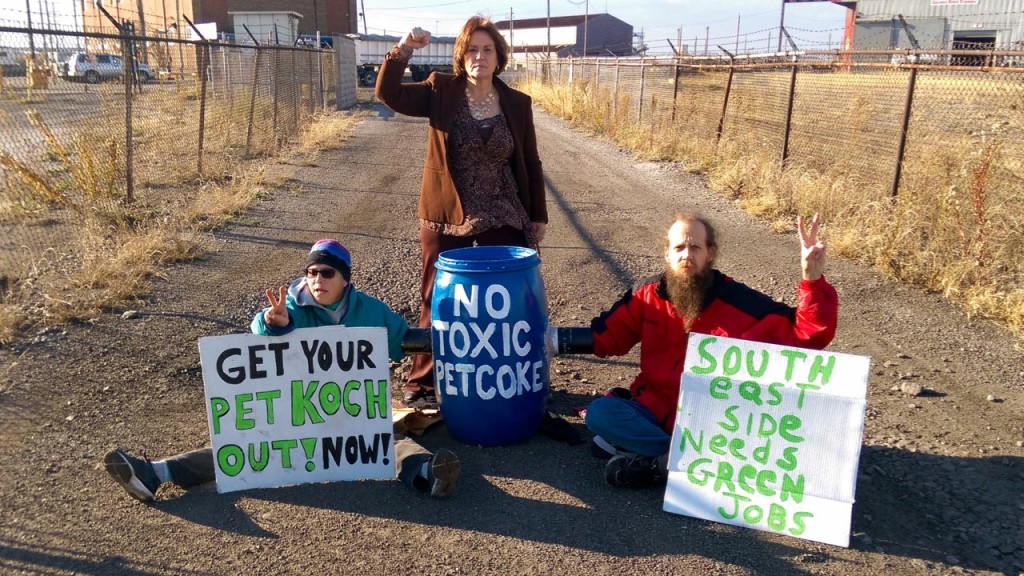[vc_row][vc_column][vc_column_text]
Southeast Chicago Environmental Justice Principles
Greater Southeast Chicago has the potential to be a hub for post-industrial innovation and community based revival for a new industrial revolution that includes clean energy and green jobs. This document acts as a follow up to the Calumet Area Land Use Plan, Millennium Reserve Vision, and Calumet Area Vision, while integrating principles of environmental justice developed by USEPA. We call on local elected officials, community leaders and business partners to be educated on the fundamentals of environmental justice and advocate for sustainable development in our community based on the following principles:
Environmental
- Anticipation and preventions of potential environmental degradation: The response of the past – “react and cure” – has proved to be economically, socially and environmentally expensive We have had to fix problems after the occur through pollution control and regulation. We need to shift to a philosophy which “anticipate and prevents” environmental degradation at the planning stages of our development projects (USEPA Principles of Sustainability).
- Respect for nature and the rights of future generations: Our economy depends not only on the continued flow of resources but also on the protection and enhancement of ecosystems and habitats. The decision-making process must consider not only today’s needs, but the needs of future generations by ensuring that a long enough horizon is used in the evaluation process (USEPA Principles of Sustainability).
- Maximize conservation and develop local renewable resources: Maximize the use of conservation technology and practices, reduce the use of non-renewable resources, and develop local renewable energy, water and material resources while also promoting energy and resource efficiency.
- Protect, preserve and restore the natural environment: Acknowledge that undisturbed natural beauty enriches and that the natural environment is basic for a healthy world, a healthy economy and a healthy society.
- Healthy communities: Clean development will keep our air, land and water clean while creating local family-sustaining jobs and economic prosperity through organized labor, job training programs and community partnerships.
Justice (per U.S. Executive Order 12898)
- Integrate considerations of economic development with environmental justice: Executive Order 12898 defines Environmental Justice as: “The fair treatment and meaningful involvement of all people regardless of race, color, national origin, or income with respect to the development, implementation, and enforcement of environmental laws, regulations, and policies. Fair treatment means that no group of people, including racial, ethnic, or socioeconomic groups should bear a dispropartionate share of the negative environmental consequences resulting from industrial, municipal, and commercial operations or the execution of federal, state, local, and tribal programs and policies.”
- Low income communities and communities of color: Lowe income communities and communities of color suffer disproportionately from the effects of dirty industry; we have an obligation to reduce the harm caused by industry, especially in these communities.
- Economic opportunity for community residents and local businesses: Residents should have the right to obtain jobs and contracts from the industry that resides in their community and local businesses should prosper.
[/vc_column_text][/vc_column][/vc_row][vc_row full_width=”” parallax=”” parallax_image=”” type=”0″][vc_column width=”1/1″][vc_column_text]
Alliance
- Community Participation: Decisions about industry should be transparent and require community participation in the decision making process. Community members have a right to be partners in decisions about industry in their community.
- Equitable benefits: Any industry entering this area must negotiate a community benefits agreement with the community. A community benefits agreement, or CBA, is a private contract between a developer and a community coalition that sets forth the benefits that the community will receive from the development. Common benefits include living wages, local hiring and training programs, affordable housing, environmental remediation, and funds for community programs. CBAs ensure that development is equitable and benefits all members of the community, eventually contributing to stronger local economies, livable neighborhoods, and increased participation in the planning process.
[/vc_column_text][/vc_column][/vc_row][vc_row full_width=”” parallax=”” parallax_image=”” type=”0″][vc_column width=”1/1″][vc_column_text]
Managing Alliances
[/vc_column_text][/vc_column][/vc_row][vc_row full_width=”” parallax=”” parallax_image=”” type=”0″][vc_column width=”1/6″][vc_single_image image=”1568″ border_color=”grey” img_link_large=”” img_link_target=”_self” img_size=”50×70″ link=”https://setaskforce.org/2016/02/jemez-principles/”][/vc_column][vc_column width=”5/6″][vc_column_text]Jemez Principles
The Jemez Principles were developed for bottom democratic organizing.[/vc_column_text][/vc_column][/vc_row]
